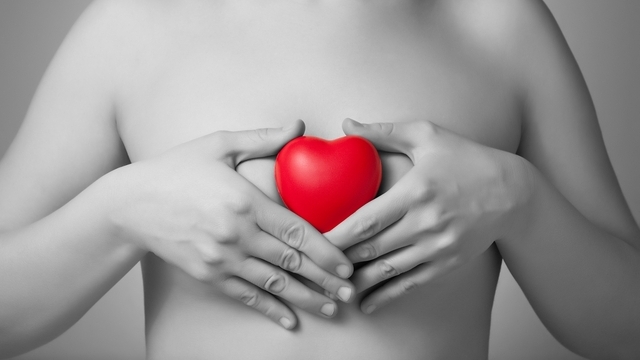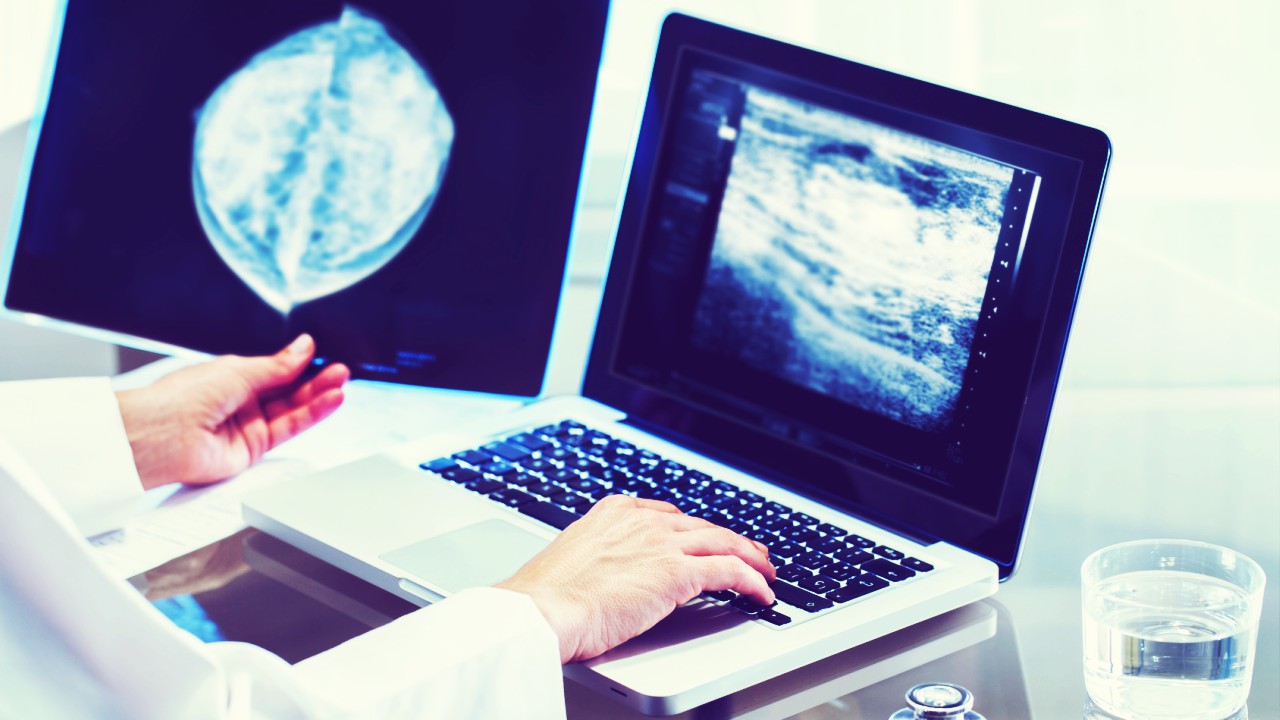The statistics are frightening, but how likely are you to get breast cancer in your lifetime? Leading oncologist Dr. Anne Moore explains how to assess your breast cancer risk factors.
RENE: Hello I'm Rene Syler, ambassador with The Cure Foundation and someone who knows a lot about breast cancer. I've seen it up close and personal. Both my mother and father had the disease. You perhaps have heard by now that one in eight women will develop the disease at some point in her lifetime. But, what exactly does that mean? Here to help you assess your risk is Dr. Anne Moore. She's the medical director of the breast oncology program at Weill Cornell Medical College. Dr. Moore good to see you.
DR. MOORE: Thank you Rene.
RENE: What are some of the factors that influence a person's chance of getting breast cancer?
DR. MOORE: Well the first, the first factor is that she's a woman. That of course is the highest risk. But of course we see breast cancer in men. About one in a hundred of our patients will be a male patient and it always takes the men by surprise. The second increased risk is family history. Most women with breast cancer do not have a positive family history, but a woman who has a sister or a mother or a daughter who's had breast cancer is at increased risk. Now we can't forget the father's family too. If a woman's father's family has breast cancer, she also could inherit a risk for breast cancer.
RENE: But even if you have that family link, most breast cancers sort of come out of the blue don't they?
DR. MOORE: Most breast cancers come right out of the blue. And a typical woman will say, I can't believe I got breast cancer, nobody in my family has had it. And that is typical rather than unusual.
RENE: But if you do have a family member on your father's side, your mother's side, in my case I had a mother and father, what does that do to you risk? Does it increase exponentially?
DR. MOORE: It increases your risk. If the family carries a gene mutation, the BRCA 1 or BRCA 2 mutation, we can actually calculate more or less what the risk would be. There's many families where there's just a lot of breast cancer and they don't have the gene mutation. We know those families are still at risk. We can't calculate it as well as we can for the women who carry the gene mutation.
RENE: As a doctor if you saw a woman who had breast cancer on every level of her family tree you would suggest seeing a geneticist or genetic counselor?
DR. MOORE: I would because I think in this case the more information you have the better you can make decisions.
RENE: If you do have a family history, do you need to be screened more often?
DR. MOORE: With out mutation carriers who really are at high risk to great breast cancer, we start screening them very early at the age of 25. We add MRI quite often to their screening and we do certainly recommend the annual mammogram.
RENE: In terms of ethnicity, is there a link there at all? Are African-American women more prone to breast cancer than Anglo women?
DR. MOORE: Again from the gene mutation, from the BRCA 1 and BRCA 2 studies, we do see that there are, for instance women of Ashkenazi Jewish anchestry have a slightly higher risk of having the gene mutation of any group of women, African-American, Asian can have the gene mutation also.
RENE: In terms of what we can do--your genes it's the luck of the draw, you know you're at the mercy of your family--but in terms of diet and lifestyle, there are some things we can do. I can imagine not smoking is a big one.
DR. MOORE: Not smoking is key for everything. There's no question about that. It is important both diet and exercise turn out to be important in breast cancer. Women who keep thin, who stay on a low-fat diet have a lower risk for breast cancer as they get older. And women who exercise have a lower-risk and it doesn't even have to be a lot of exercise. Moderate exercise lowers the risk for breast cancer.
RENE: Eat right, don't smoke, get out there and do something.
DR. MOORE: That's for sure.
RENE: One in eight women I think is the statistic in terms of breast cancer, is that correct?
DR. MOORE: That's the one we hear, one in eight. When we use the one in eight figure, it's really one in eight women who live to be 95 years old will get breast cancer. Most women will not. So if we have a room of 50 year old women, most of them, it's not one in eight. Most of those women will die before 95, most commonly of heart disease. So that's a little bit--it's important to understand that one in eight statistic.
RENE: Dr. Moore thank you. For more information you can visit the Susan G. Komen for the Cure website at www.komen.org or you can call their help line at 1800 IM AWARE. I'm Rene Syler.

Howdini is life’s little instruction manual, in HD. We’re all about bringing together the top, most respected experts in their fields to help us be the best we can be at all of the little and not-so-little challenges of our complicated lives. Howdini is the place to be for the know-how you want, when you need it. Or maybe it’s the know-how you need, when you want it. Whatever. We’re here to help. So come in and look around, won’t you?
We think you’ll love finding everything you want to learn about in one convenient place, and as we grow and add more categories and more Howdinis, you’ll be doing less surfing and more learning right here. And unlike television, Howdinis aren’t limited by time—we don’t have to break for commercials, and we’re always on.
Who is Howdini?
People often ask us, is there an actual person who is Howdini? And the answer is, it’s kind of like Lassie. Just as there were many Lassies, there are many individuals who are called Howdini. In fact, each of our experts is a Howdini, and, like all those Lassies, they really know their tricks. (Although so far there is no ‘How to tell your master that Timmy is trapped in the old abandoned mine’ segment)
Our gurus are people you know and trust because you’ve been getting advice from them for years, at places like Good Morning America, The Today Show, Money, Prevention, and Food and Wine (to name just a few). Many are best-selling authors. Others, like our medical experts, are respected leaders in their fields.
Howdini History
The first Howdini was Joanna Breen, who left a comfortable career at ABC’s 20/20 to create a how to video website after one too many frustrating experiences with handymen who weren’t that handy. Joanna had traveled the world reporting with Barbara Walters and others on injustice, outrage, and tragedy, but now it was time to turn her talents to dealing with crises closer to home, like what do you do if you drop your diamond ring down the drain. Joanna is the quintessential can-do girl, so she didn’t find the prospect of launching a gigantic website the least bit daunting. (Ok, that last part isn’t entirely true.)
Joanna convinced an old ABC News buddy, Shelley Lewis, to join her. Shelley had supervised roughly 9.7 million helpful how to segments during a long career executive producing television shows like Good Morning America and CNN’s American Morning. A self-described “info-pig” who loves all kinds of information programming, she is never happier than when she’s learning an amazing new tip that she can annoy share with everyone she knows. Needless to say, Howdini was a dream gig for her. A career woman, a wife, a mother, and author of two books, Shelley considers herself equally challenged by all the facets of her life.
Joanna and Shelley were introduced to marketing executive Alison Provost by a mutual friend who knew that Alison had what they needed - entrepreneurial experience, patience, and a checkbook that still had checks in it. Joanna and Shelley could see right away that Alison should join Howdini. They figured that they would take care of the programming, and Alison would bring trustworthy sponsors to help pay the bills. It took Alison significantly longer to be convinced, maybe because she was crazy busy running a marketing firm called PowerPact, which she continues to oversee while serving as the biggest of big cheeses at Howdini. But whether it’s playing Suduko or launching a new business in a field she knows little about, Alison loves the challenge of a good puzzle, It wasn’t long before she began dropping obscure internet terms like “user-interface” and “googlebot” into casual conversation.
What’s Next for Howdini?
Our goals are modest. Complete and total domination of the internet, crushing Google, Microsoft, and any other punks who get in our way. (Hey, it’s a just a goal.) But until then, we will content ourselves making the best, most professional, most credible how to videos you can find anywhere. We want to help you solve your career issues, your parenting problems, your money troubles. We want you to be more glamorous, healthier, and less stressed out. We want you to check Howdini every day for fun, interesting, useful advice from experts you know and trust.
We want to make Howdini the community you love to be part of every day, To do that, we need to hear from you. Please share your suggestions, rate and comment on the Howdini videos, and the blog, (The Howdini blog). Tell us what you’d like us to create for you.
And then, when we’ve achieved that, it’s back to working on complete and total domination of the internet.



































Add a CommentComments
There are no comments yet. Be the first one and get the conversation started!